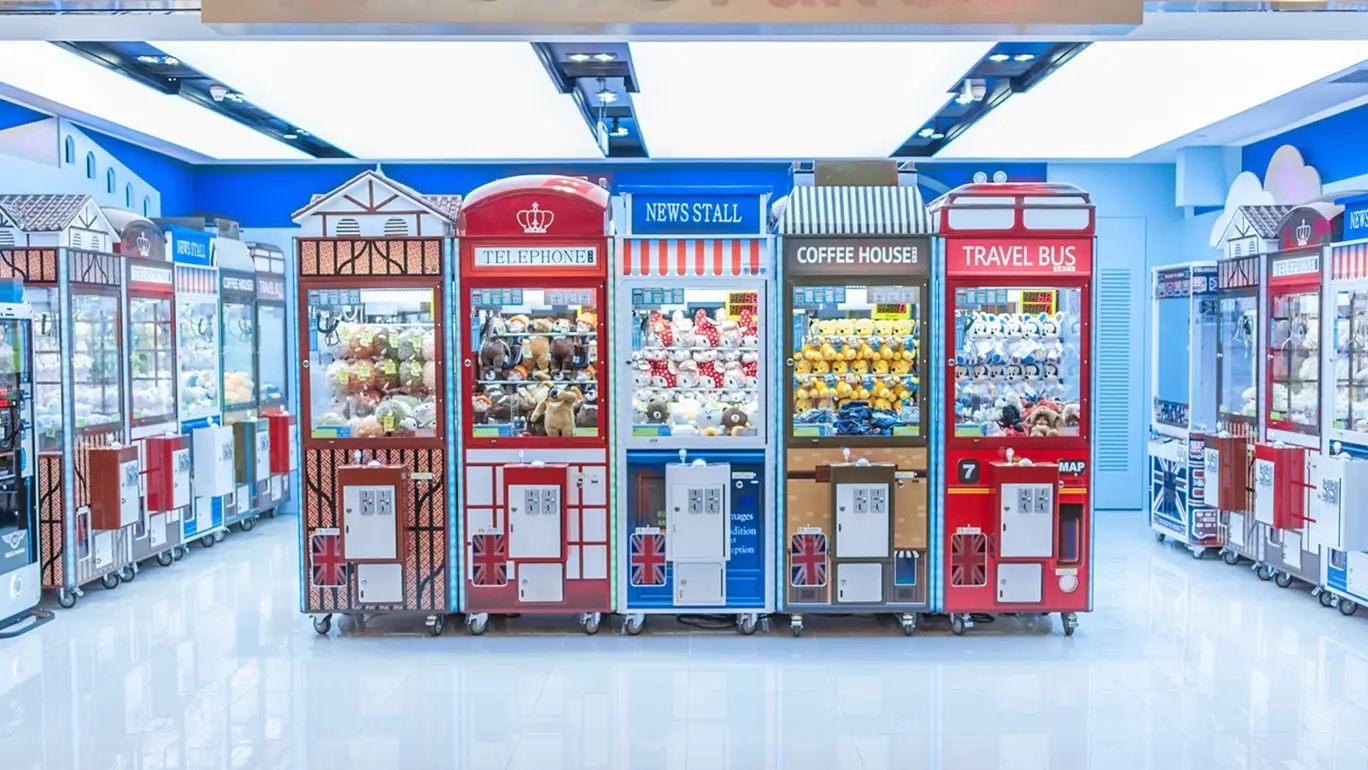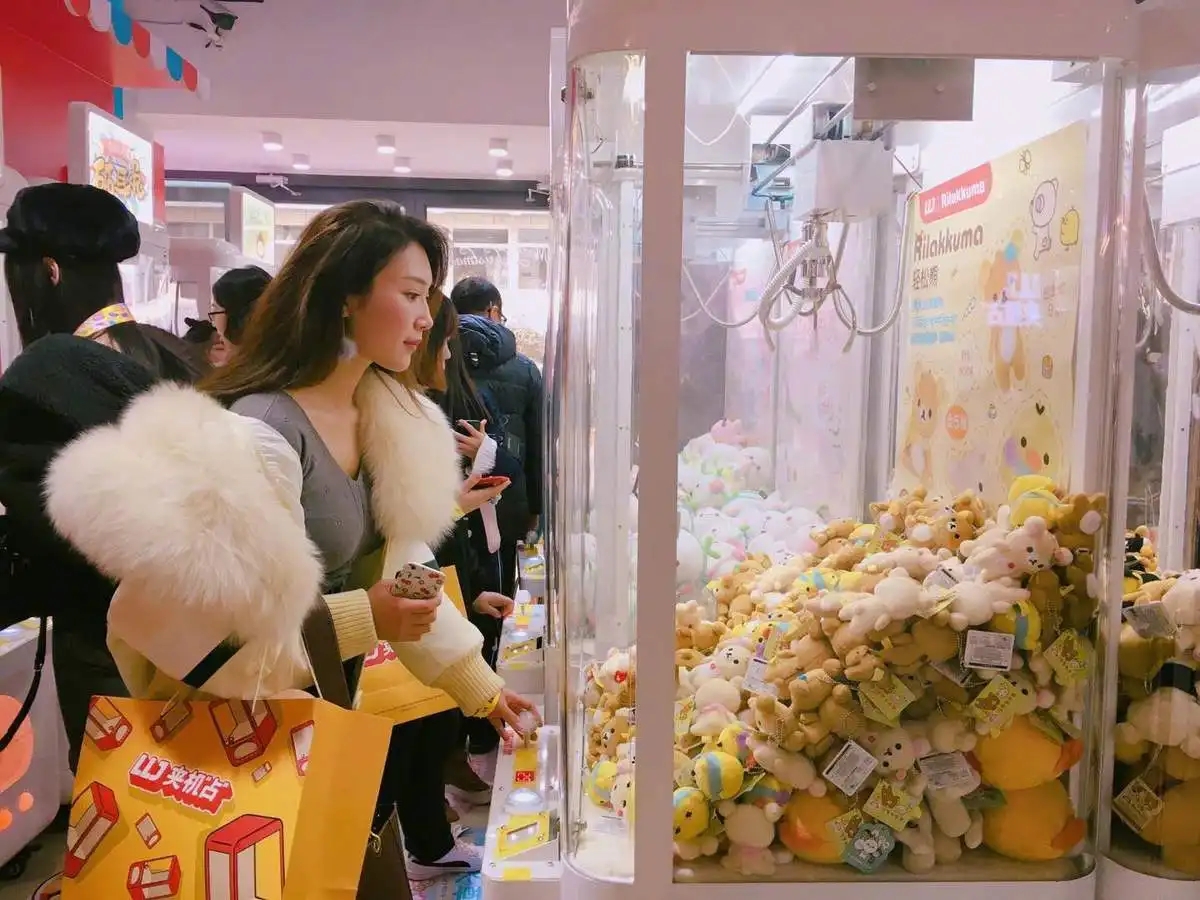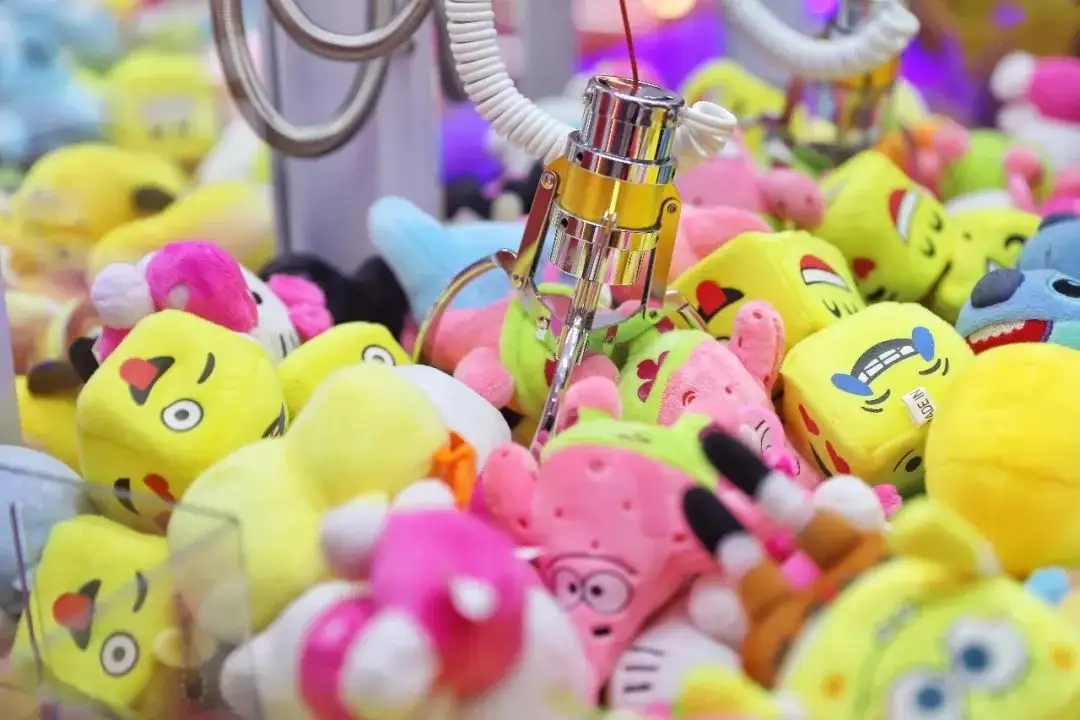Core guide:
1. How does the doll machine make people want to stop step by step?
2. What are the three stages of the doll machine in China?
3. Is it possible to “lie down and earn money” by making a doll machine?
To buy a slap sized plush toy worth 50-60 yuan with more than 300 yuan may be a brain problem for many people.
But if you spend 300 yuan playing on the doll machine for an afternoon and only catch a doll, people will only say that you are not skilled or lucky.
The doll machine is the spiritual “opium” of contemporary people. From the old to the young, few people can resist the yearning to capture a doll successfully. As a business that many people regard as “one capital and ten thousand profits”, how does the doll machine rise and develop in China? Can making a doll machine really “make money lying down”?
The birth of the doll machine dates back to the United States in the early 20th century. The recreational “excavator” based on the steam excavator began to appear, allowing children to obtain candy by operating shovel type or claw type devices independently.
Gradually, candy excavators evolved into prize grabbing machines, and game participants began to expand from children to adults. The grabs also increased from candy at the beginning to small daily necessities and some high-value goods.
With the application of high-value commodities in prize grabbing machines, their speculative properties become stronger and stronger. Later, merchants began to introduce prize grabbing machines into casinos and place coins and chips in them. This practice quickly became popular until 1951, when such devices were banned by law and disappeared in the market.
In the 1960s and 1970s, due to the shrinkage of the arcade market, Japanese game manufacturers began to look for a transformation path and focused on the prize grabbing machine. Around 1980, on the eve of Japan’s foam economy, a large number of plush toys were unsalable. People began to put these plush toys into prize grabbing machines, and dolls began to replace snacks as the most common sights.
In 1985, Sega, a Japanese game manufacturer, developed a button operated two claw grab. This machine, called “UFO Catcher”, was simple to operate, cheap, and eye-catching. Once it was launched, it was highly praised. Since then, the doll machine has spread throughout Asia from Japan.
The first stop for dolls to enter China was Taiwan. In the 1990s, some Taiwanese manufacturers who had mastered the production technology of dolls from Japan, attracted by the policy of reform and opening up, set up factories in Panyu, Guangdong. Driven by the manufacturing industry, dolls also entered the mainland market.
According to the statistical data of IDG, by the end of 2017, a total of 1.5 to 2 million dolls had been installed in 661 core cities nationwide, and the annual market size exceeded 60 billion yuan based on the annual revenue of 30000 yuan per machine.
Three Steps, China’s Growth History of Baby Machine
So far, the development of doll machine in China has gone through several periods.
In the 1.0 period, that is, before 2015, dolls mainly appeared in the video game city and other comprehensive entertainment venues, mainly grabbing plush toys in the form of coin operated claw machines.
At this time, the doll machine was in a single form. Because the machine was mainly introduced and assembled from Taiwan, the cost was high, and the machine was highly dependent on manual maintenance. It was mainly used as a device to attract female users in the video game city, which belonged to the basic popularization stage.
In the period of 2.0, namely 2015-2017, the doll machine market entered a stage of rapid development, including three nodes:
First, the overall lifting of the ban on the sale of game consoles. The change of policy has brought new opportunities for manufacturers. Since 2015, the doll machine manufacturing industry in Panyu has changed from assembly to research and development. Manufacturers who have mastered the technology have concentrated on production, forming a mature doll machine industry chain.
Second, after the first year of mobile payment in 2014, the offline application scenario of mobile payment technology in dolls. In the past, dolls were limited to coin operated scenarios, with cumbersome processes and heavy reliance on manual maintenance.
The emergence of mobile payment makes the doll machine get rid of the currency exchange process. For consumers, it is OK to scan the mobile phone and recharge online, while reducing the pressure of manual maintenan.
Third, the emergence of remote regulation and management function. With the application of mobile payment, the management and control of dolls face higher requirements. Remote fault reporting, inventory (number of dolls) management and other functions began to go online, and dolls began to shift from the artificial era to the intelligent era.
At this time, under the condition of lower cost and better experience, the doll machine was able to leave the electronic amusement park and enter more scenes such as shopping malls, cinemas and restaurants, and entered into high-speed expansion with the trend of traffic returning offline and fragmented entertainment.
In the 3.0 era, that is, after 2017, the doll machine ushered in a comprehensive upgrade of channels, technology and content.
The maturity of the remote control and management function has led to the birth of the online grasping doll. In 2017, the online grasping doll project ushered in a wave of financing. With the online operation and offline mailing, Grab the Doll has become extremely close to daily life without time and space restrictions.
In addition, the emergence of small programs makes the operation of Grab Baby on the mobile terminal more convenient, brings a window of marketing opportunities, and the profit model of the doll machine has become diversified.
With the evolution of people’s consumption habits, the doll machine has weakened as a small and broad speculative property, and started to be associated with the pink economy and IP economy. The doll machine has become an effective sales channel from a sales channel. The form of doll machine began to become diversified: two claw, three claw, crab machine, scissors machine, etc. Lipstick machine and gift machine derived from doll machine also began to rise.
At this point, the doll machine market is also facing a practical problem: limited high-quality points, massive entertainment project competition, how to deal with the growth bottleneck?
The growth bottleneck of the doll machine market comes from many aspects, first of all, the diversification of the offline entertainment and leisure market.
Since entering China for more than 30 years, the form of doll machine has not changed much, but new entertainment projects have been emerging in endlessly. In the video game city, the emergence of music games has grabbed the attention of female users, while fragmented entertainment and leisure projects have emerged one after another, and mini KTV, lucky boxes, etc. are also constantly grabbing the limited offline entertainment time of users.
The blow from online can not be underestimated. With the high popularity of mobile phones, more and more applications are occupying users’ attention, and people spend more and more time online.
Mobile games, live broadcasts, short videos, information platforms, social software… While more and more content has occupied the lives of users, the hot online catch baby in 2017 has turned cold. According to the public data, the retention rate of the doll grabbing machine is 6% for the next day and only 1% – 2% for the third day. As a comparison, 30% – 35% for ordinary mobile games and 20% – 25% for the third day.
It seems that the doll machine has encountered the problem of growth. How to cope with the increasingly strong borderless competition with the “senior age” in his 30s?
Such a store may give us an answer: an offline chain store specializing in dolls, with an average of 6000 people entering the store every day and more than 30000 times of dolls starting, has a daily turnover of about 150000 according to the price of 4-6 yuan per time.
The reason behind this series of figures is also very simple, because all the dolls sold in this store are hot IP derivatives with limited edition and can not be bought outside. With this IP centered approach, the result of getting dolls is far more significant than the entertainment of catching dolls.
This so-called “culture and entertainment are not separated”. It is a good way to let IP fans pay for “collection addiction” by the entertainment way of catching dolls when the consumer users of dolls pay more attention to “appearance”.
Similarly, the effectiveness of this method also reminds us that the doll machine has basically bid farewell to the era of wild growth and “making money lying down” in the past. Whether in form, content or technology, the doll machine industry has been transformed.
Post time: Dec-16-2022






